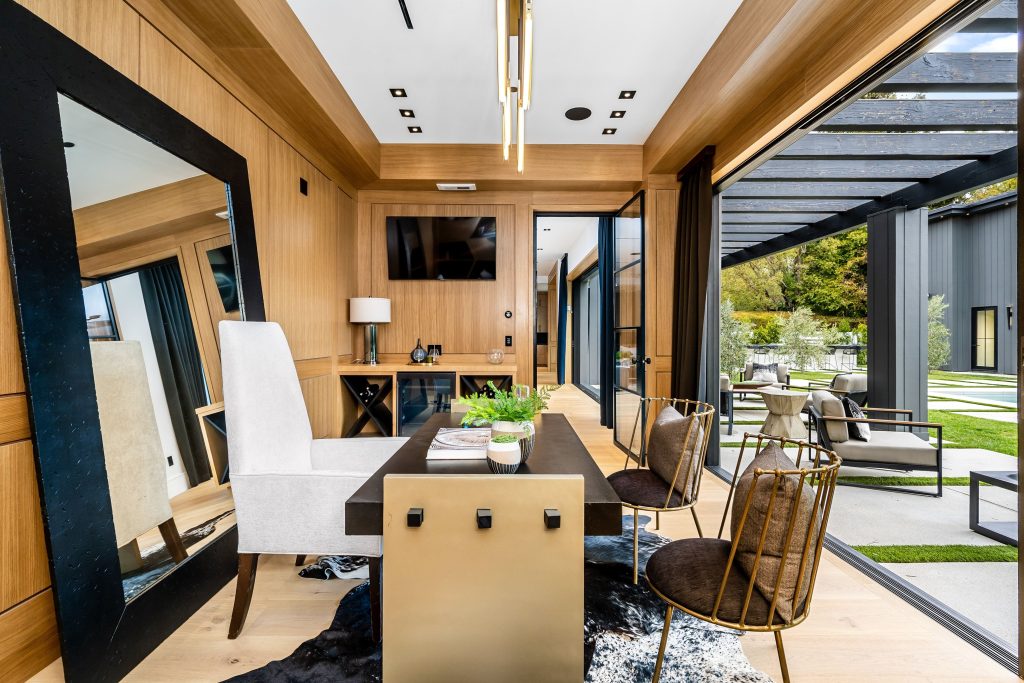
Introduction
In recent years, the home office has become a necessity for more and more professionals. Whether you’re a doctor, lawyer, entrepreneur or expert in another field, working from home has become an efficient way to manage your schedule and save time by avoiding the daily commute. However, the challenges of such an environment are many: how do you transform a space in your home into a productive, yet aesthetically pleasing office? How do you make sure the space gives you the comfort you need to work long hours without discomfort?
A home office is not just a place where you do your work; it is a personal space that should support your inspiration, creativity and discipline. Your choice of furniture, efficient organization, the right lighting and a few well-placed decorative elements can make a major difference in how you feel and how productive you are.
This article will give you a step-by-step guide to creating a functional and stylish home office that meets both your professional and aesthetic needs. We’ll explore the best design tips to create a workspace that combines comfort with performance, so that you feel motivated and focused every day.
1. Choosing the right space
The first step in creating a productive and stylish home office is identifying the ideal space in your home. Whether you have a separate room or just a dedicated area in a larger room, your choice of location has a direct influence on your comfort and ability to concentrate.
Key factors for an optimal workspace
- Natural light
Natural light is a key factor in creating a healthy and productive workspace. Ideally, position your desk near a window to benefit from natural light throughout the day. Light not only reduces eyestrain, but also improves your mood and energy. - Privacy and quiet
Choose a space that is as isolated as possible from the noises in your home. If you live in a smaller apartment, you can cordon off your office area using decorative panels, screens or even large plants. A quiet space helps you concentrate and stay efficient throughout the day. - Generous space
A home office should give you enough room to work comfortably, especially if you use multiple devices or documents. Ideally, you should have enough space for a desk, chair and any storage cupboards or shelves without feeling restricted. - Ventilation and thermal comfort
Temperature and air quality are essential factors for your long-term comfort. Make sure your office is in a well-ventilated area and that you can control the temperature to avoid feeling uncomfortable during long working hours.
Recommendations for different types of housing
- For spacious homes: If you have a dedicated room, turn it into a fully equipped office. Choose quality furniture, position the desk by a window and use the extra space to organize all the equipment and documents you need.
- For smaller apartments: Opt for a collapsible or corner desk placed in a bright area. Use vertical storage solutions, such as shelving or wall-mounted organizers, to maximize available space without cluttering the work area.
2. Ergonomics as a priority
To keep you productive and prevent discomfort, ergonomics should be at the heart of any office design. An ergonomic workspace not only supports your long-term health, but helps you stay focused and efficient throughout the day.
Ergonomic furniture
- Chair
Choose an ergonomic, height-adjustable chair with lumbar support to maintain correct posture. Your arms should be parallel to the floor and your feet should rest on the floor or on a footrest. A comfortable chair reduces muscle tension and supports your spine, preventing back pain and discomfort. - Office
Your desk height should be correct to avoid overstraining your wrists and shoulders. If you use a laptop, consider purchasing an adjustable stand or a separate keyboard and mouse to keep the screen at eye level, reducing neck strain.
Ergonomic accessories
Laptop and monitor stand
A laptop stand or adjustable monitor helps keep the screen at eye level, preventing head tilt and neck strain. Ideally, the top of the screen should be slightly below eye level and at a distance of 50-70 cm.
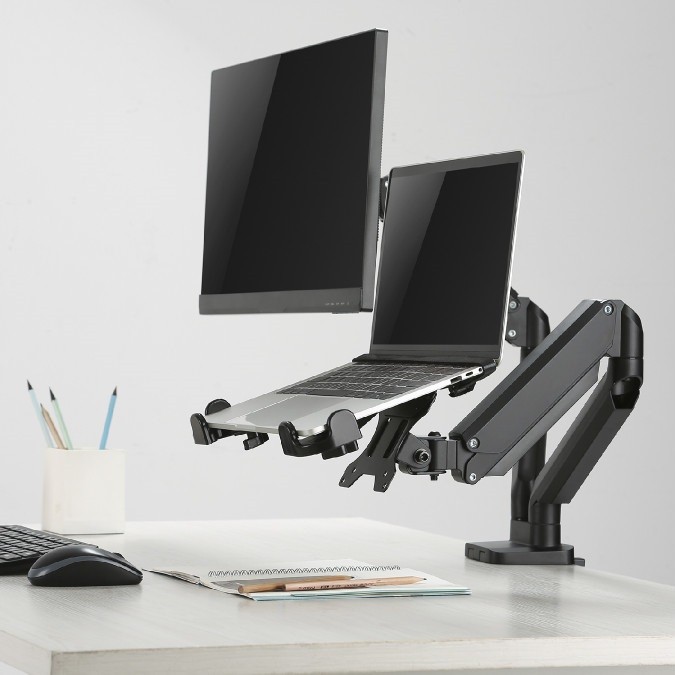
Ergonomic mouse and keyboard
If you spend long hours typing or surfing, an ergonomic keyboard and mouse can make a big difference. They are designed to reduce pressure on your joints, contributing to a natural hand position.
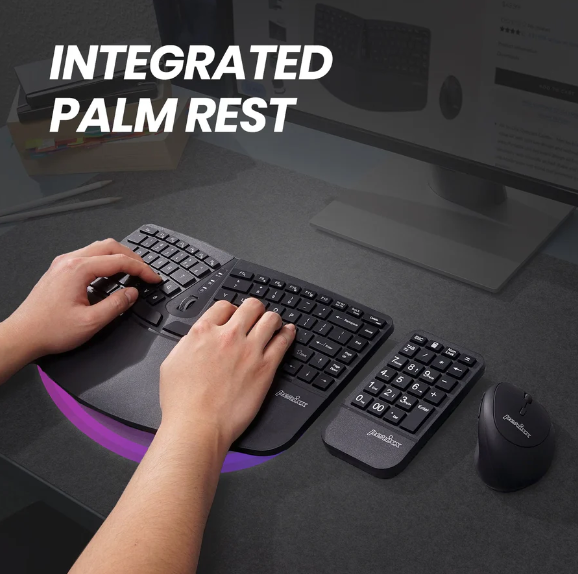
Footrest
A footrest is a simple but valuable accessory that helps maintain a correct and comfortable posture. It is especially recommended if your desk or chair cannot be fully adjusted.
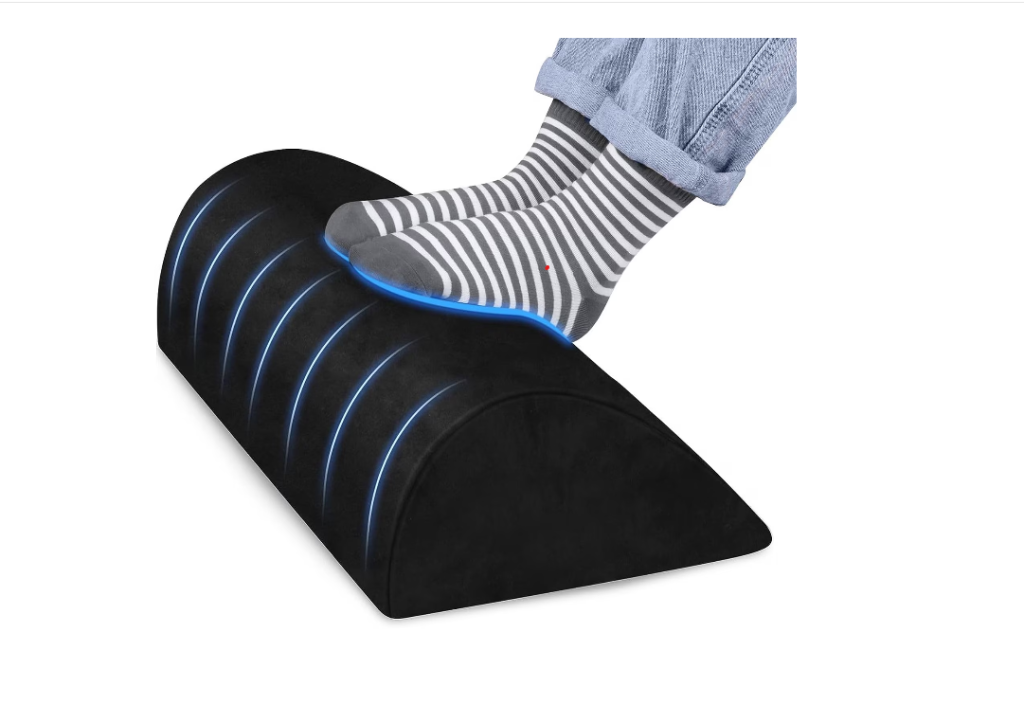
Long-term benefits
Investing in ergonomics not only means immediate comfort, but also significant long-term benefits. An ergonomic desk prevents muscle tension and chronic aches and pains, contributing to well-being and supporting your daily performance. This makes every working day more productive and enjoyable.
3. Work space organization and optimization
An organized and optimized workspace helps you to be more efficient and eliminate the stress of clutter. A well-organized office helps you find what you need quickly and keep your focus, reducing time spent searching for documents or equipment.
Smart storage
- Integrated cabinets and drawers
Choose a desk with built-in drawers or an adjacent cabinet for storage. These are useful for important documents, equipment and other necessary items. Organizing items from the start will help keep your space tidy in the long run. - Shelving and shelving
Wall-mounted shelving or shelving units are great for vertical storage, especially in limited spaces. They not only save space on your desk, but also add an aesthetic and professional element by giving you the opportunity to organize books, files or decorative items. - Drawer organizers and dividers
Drawers can quickly become cluttered if not organized properly. Use dividers or organizers to divide your drawers into separate compartments for different categories of items so that you keep a fixed place for each item.
Minimalist organization systems
A minimalist desk is essential for a tidy and soothing workspace.
4. Ideal lighting
Lighting is essential for a productive and comfortable home office. The right light not only protects your eyesight and reduces eyestrain, it also affects your energy level and mood. For a home office, it is ideal to combine natural and artificial light as effectively as possible.
Natural vs artificial light
- Maximizing natural light
If possible, place your desk near a window to get as much natural light as possible. Exposure to natural light helps regulate your circadian rhythm, which contributes to a steady energy throughout the day. If your desk is placed directly in front of a window, you can use a translucent curtain to reduce reflections on your monitor while maintaining a bright atmosphere. - Correct artificial lighting
In addition to natural light, it’s essential to invest in artificial light suitable for work periods in the evening or on darker days. A combination of ambient and directional light is ideal for a balanced workspace.
Luminaire recommendations
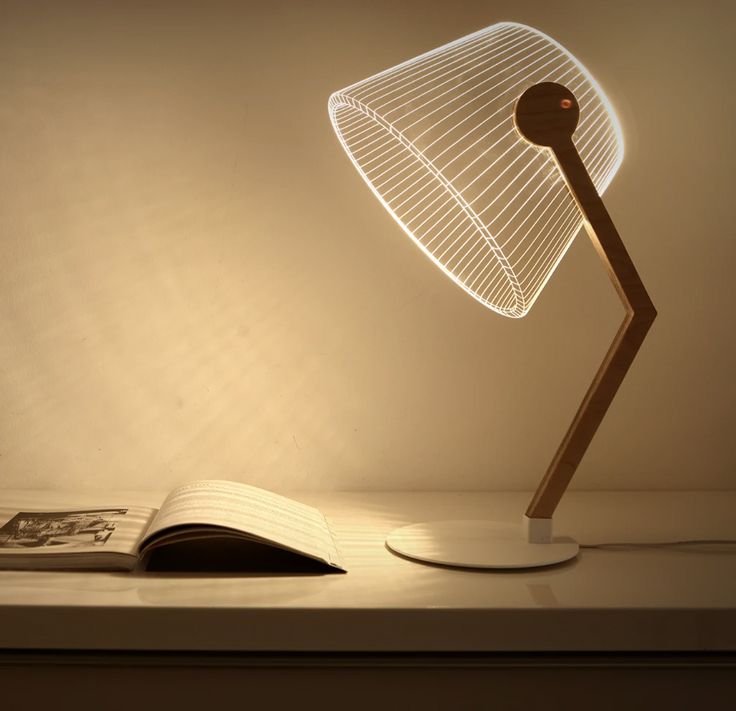
Adjustable desk lamps
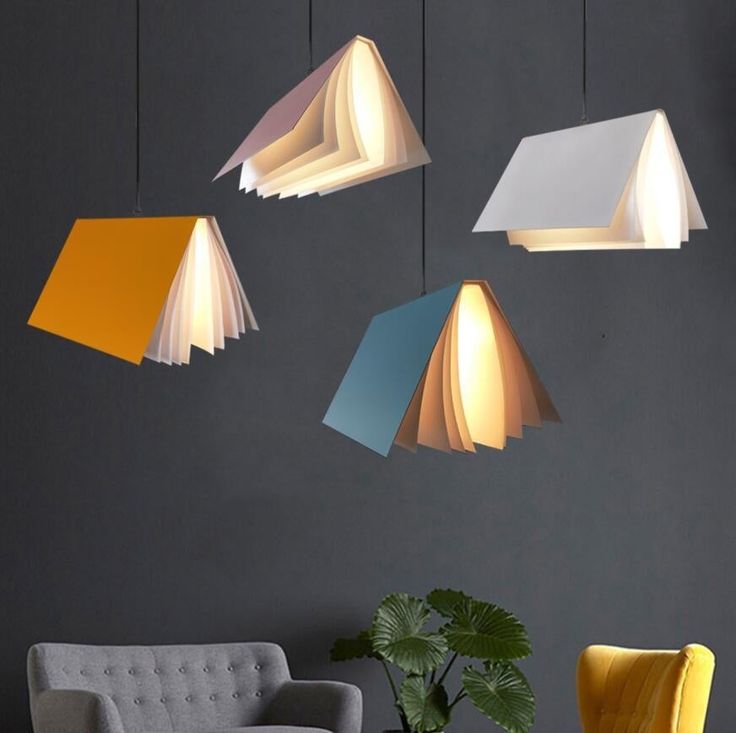
Ambient lighting
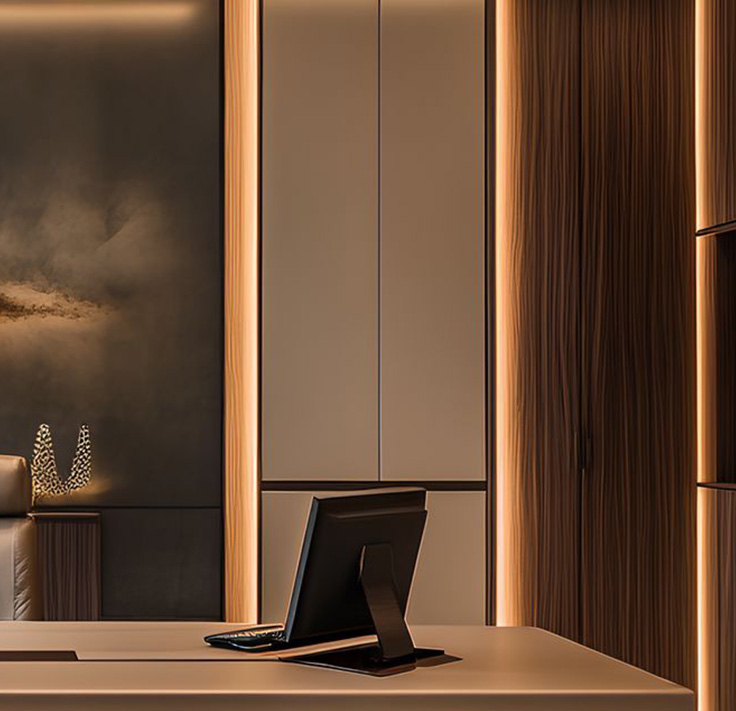
Accent and decorative lighting
5. Decor and personalization elements
For your home office to be a space that stimulates your creativity and where you feel comfortable, it’s essential to add decor elements that reflect your style and personality. Well-chosen décor can transform a functional space into an inspiring and relaxing one, improving your mood and productivity.
Accessories and plants
Indoor plants
Plants are a great addition to any office, bringing not only a splash of color but also benefits to your health and productivity. Choose easy-care plants such as ficus or fern. Plants purify the air and create a relaxing atmosphere, helping to reduce stress.
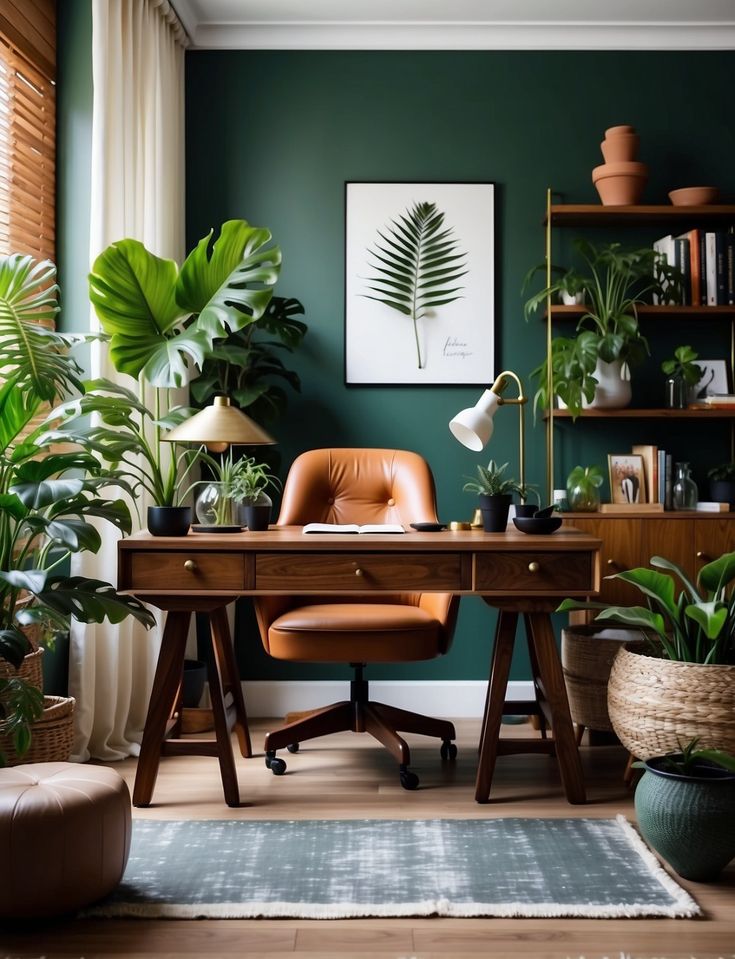
Personal accent
Add a few objects that reflect personal passions or interests: reference books, a nice notebook, a framed photo or small art objects. These will make your space more familiar and motivating, giving you a sense of belonging and comfort.
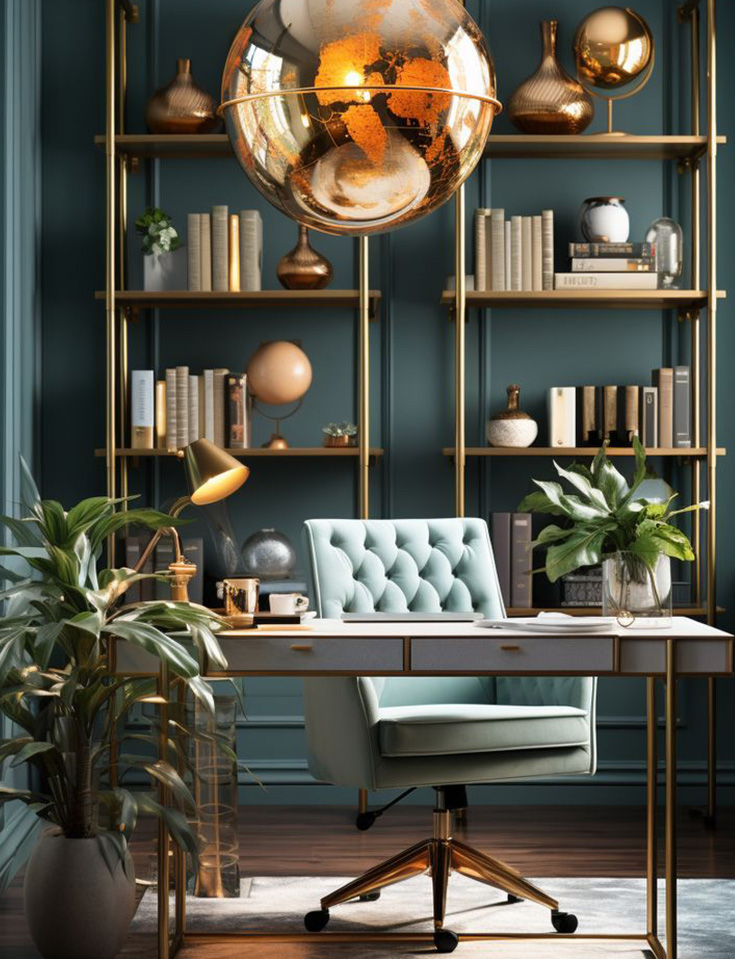
Matching colors for productivity
Neutrals and calming colors
White, gray and beige are ideal shades for walls as they are not distracting and create an elegant and soothing base. These colors can be combined with accents of blue, green or lavender to stimulate concentration and creativity without creating a busy atmosphere.
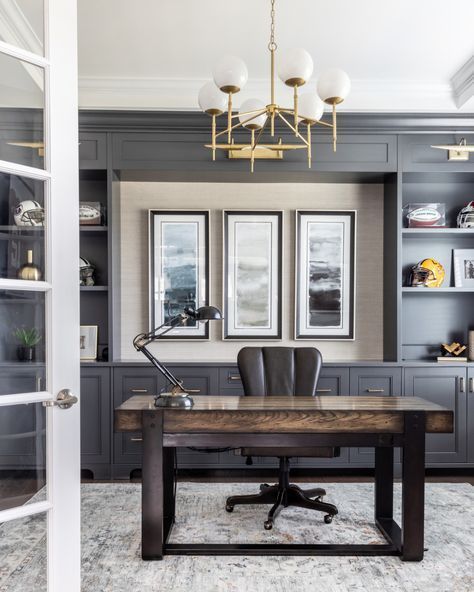
Energizing color accent
If you want to add energy to your office, add accents of vibrant colors like yellow, pink, orange or vibrant green, but use them sparingly. A colourful cushion, lamp or desk organizer in a lively hue will add dynamism without visually cluttering the space.
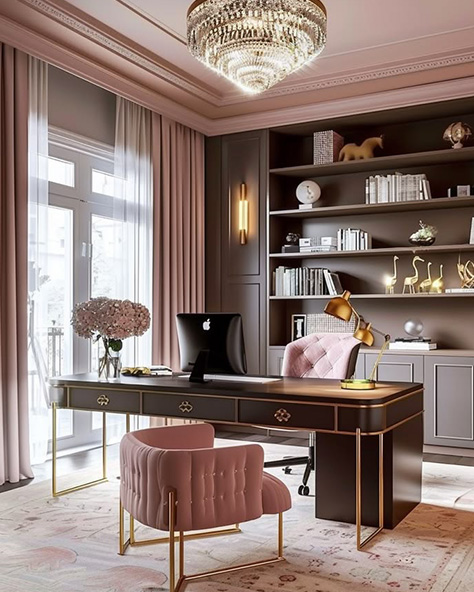
Creating an aesthetic balance
A well-decorated office should remain functional and not distract from your daily activities. Choose decorations that enhance your comfort and complement the space while maintaining a tidy aesthetic. A balance between simplicity and personalization will transform your office into a pleasant and inspiring place.
6. Tips to boost productivity
A well-designed office contributes enormously to productivity, but there are other aspects that can help you stay focused and organized. Implementing simple techniques for organizing tasks and optimizing your workspace contributes to a more efficient and enjoyable working experience.
Space organization techniques
- Weekly and daily planning
Start each week and each day with a clear list of goals and priorities. Planning ahead helps you stay focused and divide your time effectively. You can use a planner, diary or digital apps to help you track deadlines and progress. - Structuring the office into micro-zones
If space permits, organize your office into dedicated areas: an area for focused work, a relaxation area and an area dedicated to office equipment. Structuring your space helps you to segment your activities, avoiding overwork and changing the pace when necessary.
Reducing distractions
- Setting no-break periods
To keep your productivity at its peak, set times to avoid any interruptions, such as phone calls or checking emails. Try the Pomodoro technique (25 minutes of focused work followed by a 5-minute break) to create a balance between concentration and relaxation. - Eliminate visual distractions
Keep only the essentials on your desk and avoid distractions such as unnecessary gadgets or busy decorations. A simple, uncluttered desk is more conducive to daily concentration and efficiency.
Creating a ritual to start and end the day
Establishing a ritual at the beginning and end of the day helps you to better define your work schedule. At the beginning of the day, start with a small activity to organize or review priorities, and at the end of the day, take a few minutes to tidy your desk and prepare for the next day. These habits help you create a healthy routine and separate work from personal time.
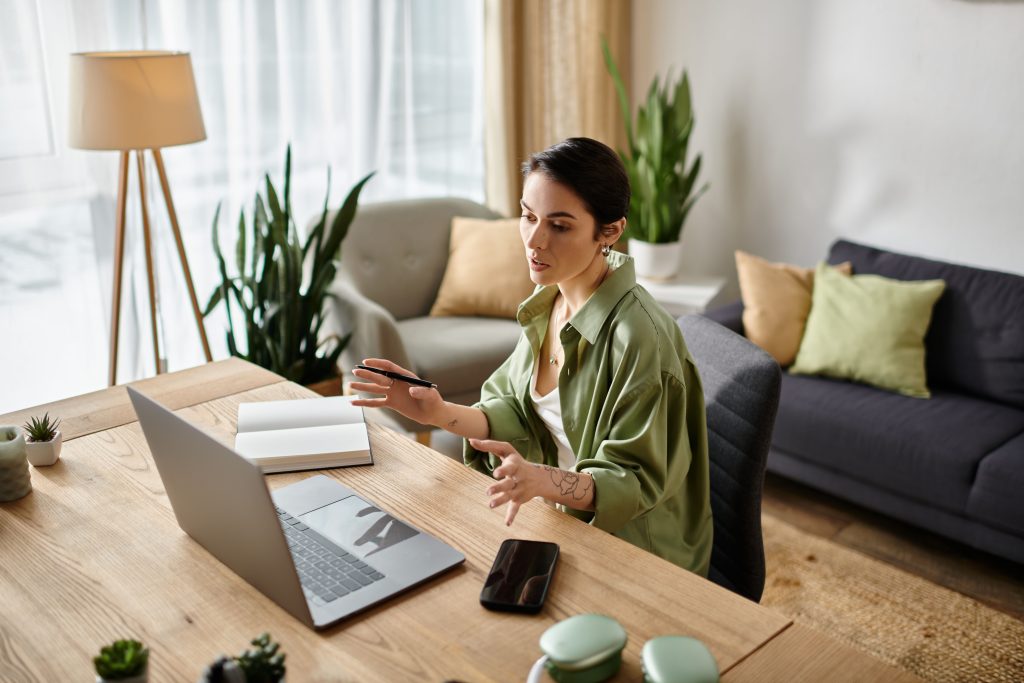
Conclusion
A well-designed home office is more than a workspace – it’s an investment in your productivity, comfort and well-being. Choosing the right space, investing in ergonomics, efficient organization, the right lighting and being equipped with quality technology are all essential elements that contribute to an ideal working environment. Personalized décor and organizational techniques provide you with a setting that combines professionalism with aesthetics, stimulating you to do your best every day.
By implementing these tips, you’ll transform your home office into a place where you can work to the highest standards, a space that inspires you and gives you the support you need for long-term success.